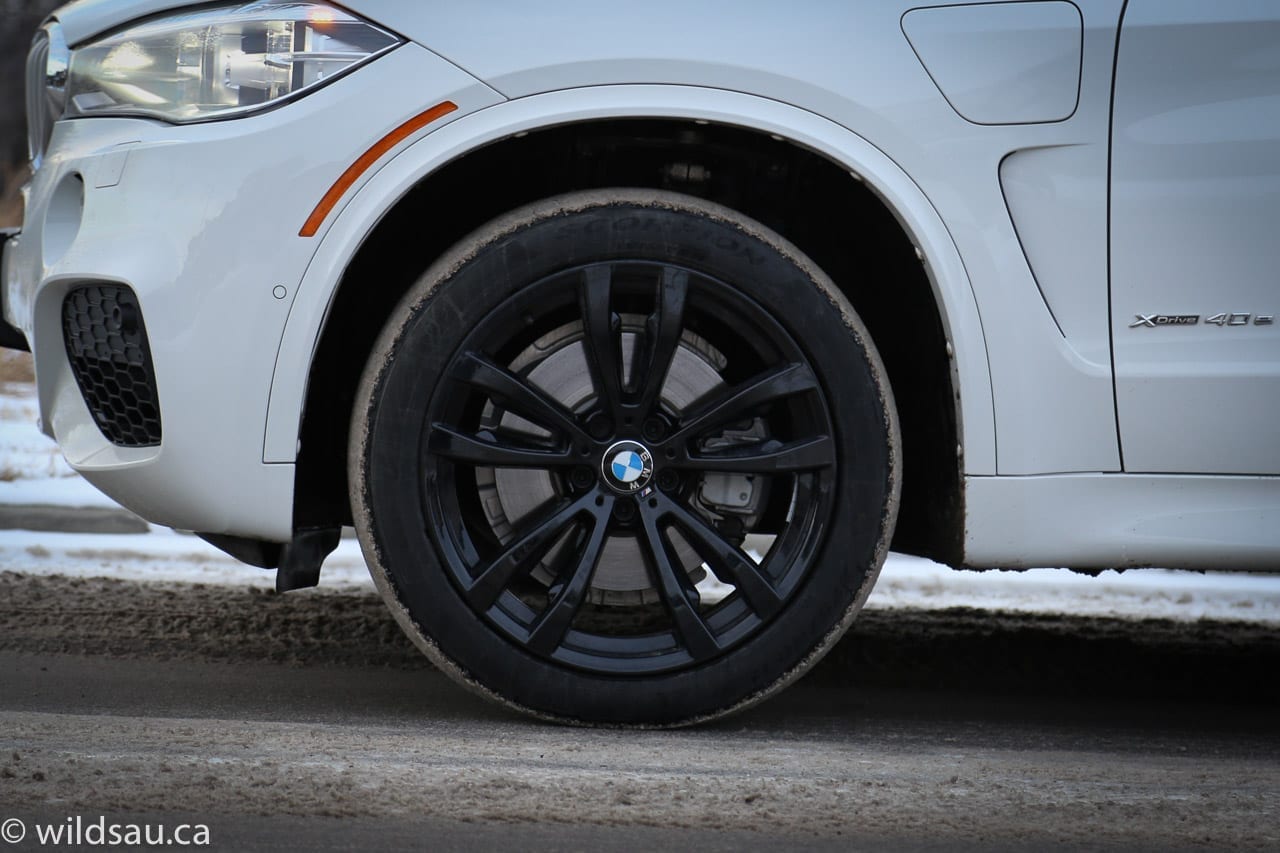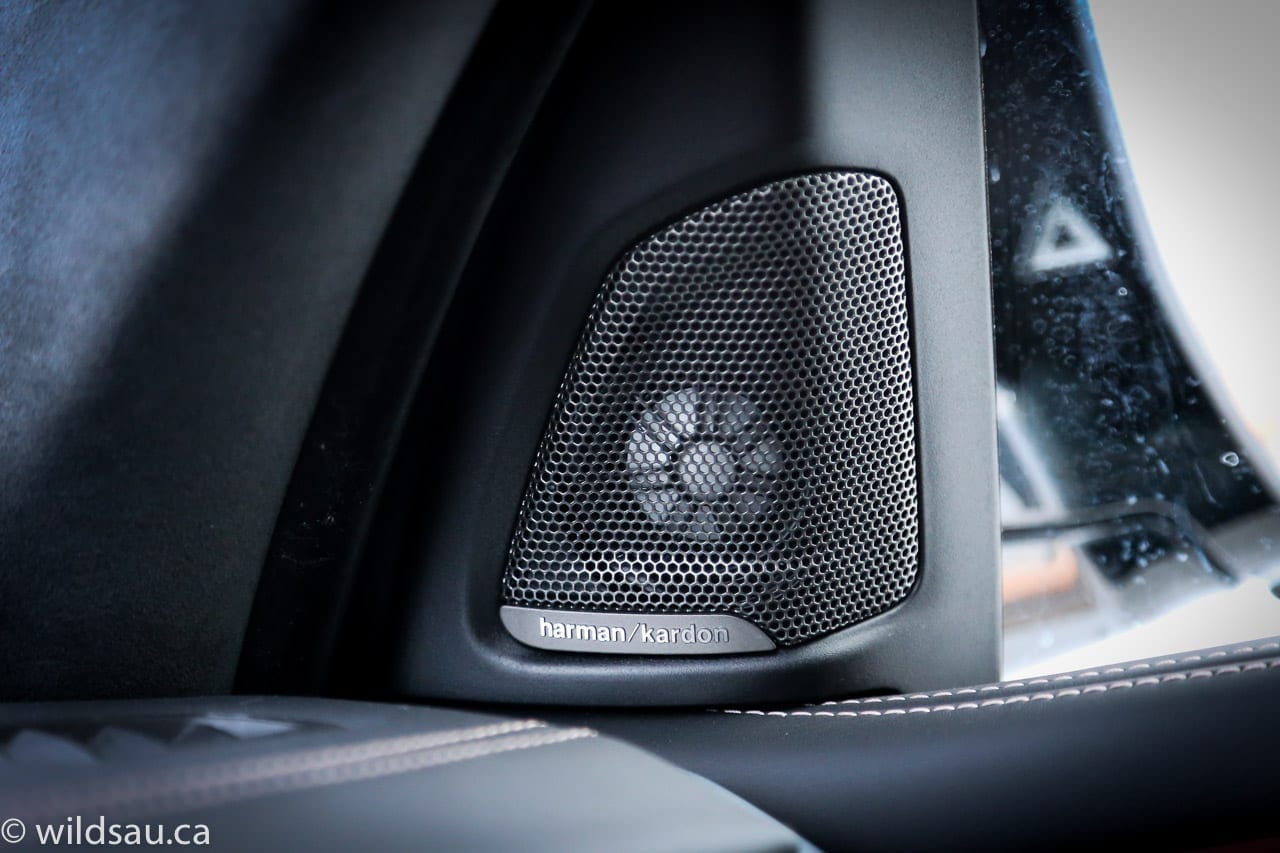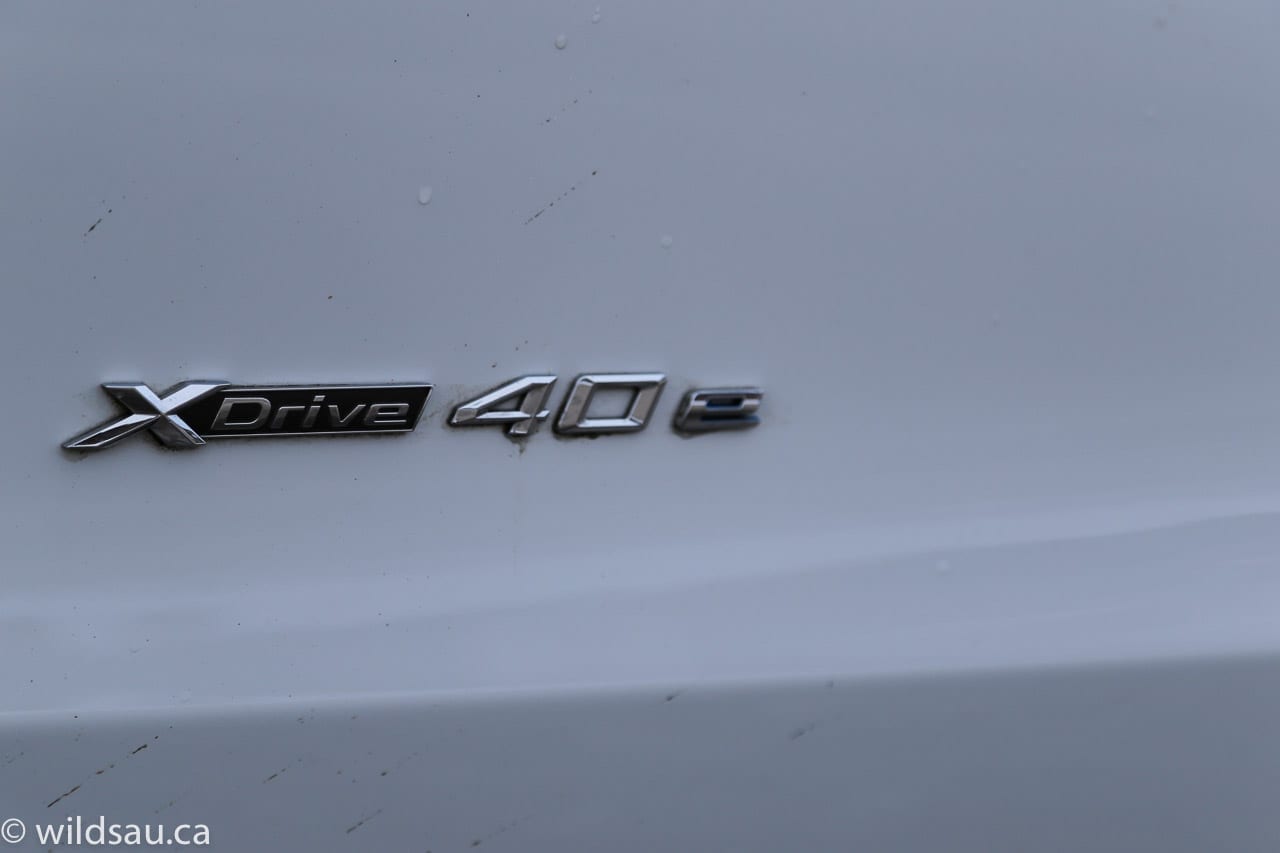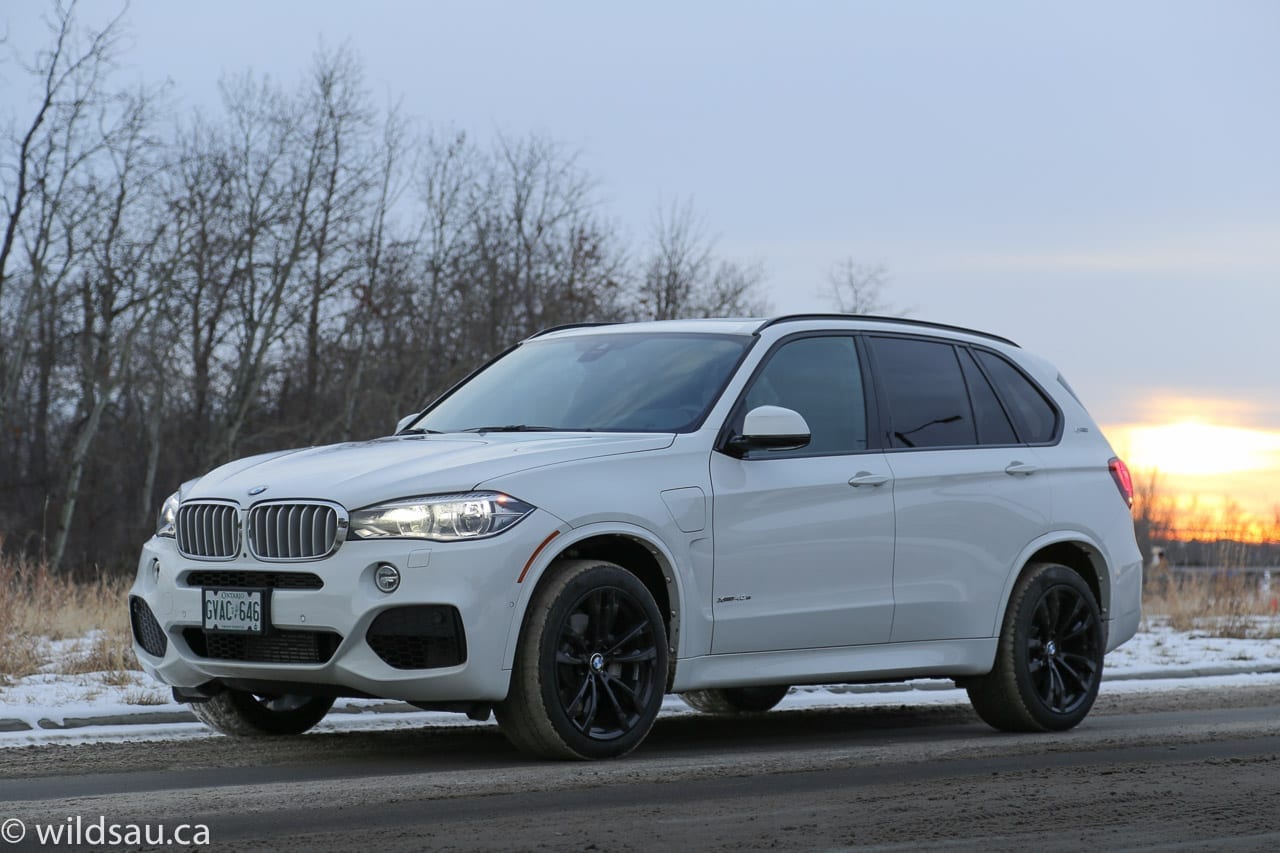What ho? A plug-in hybrid BMW? And an SUV no less?
Review and photos by Tom Sedens
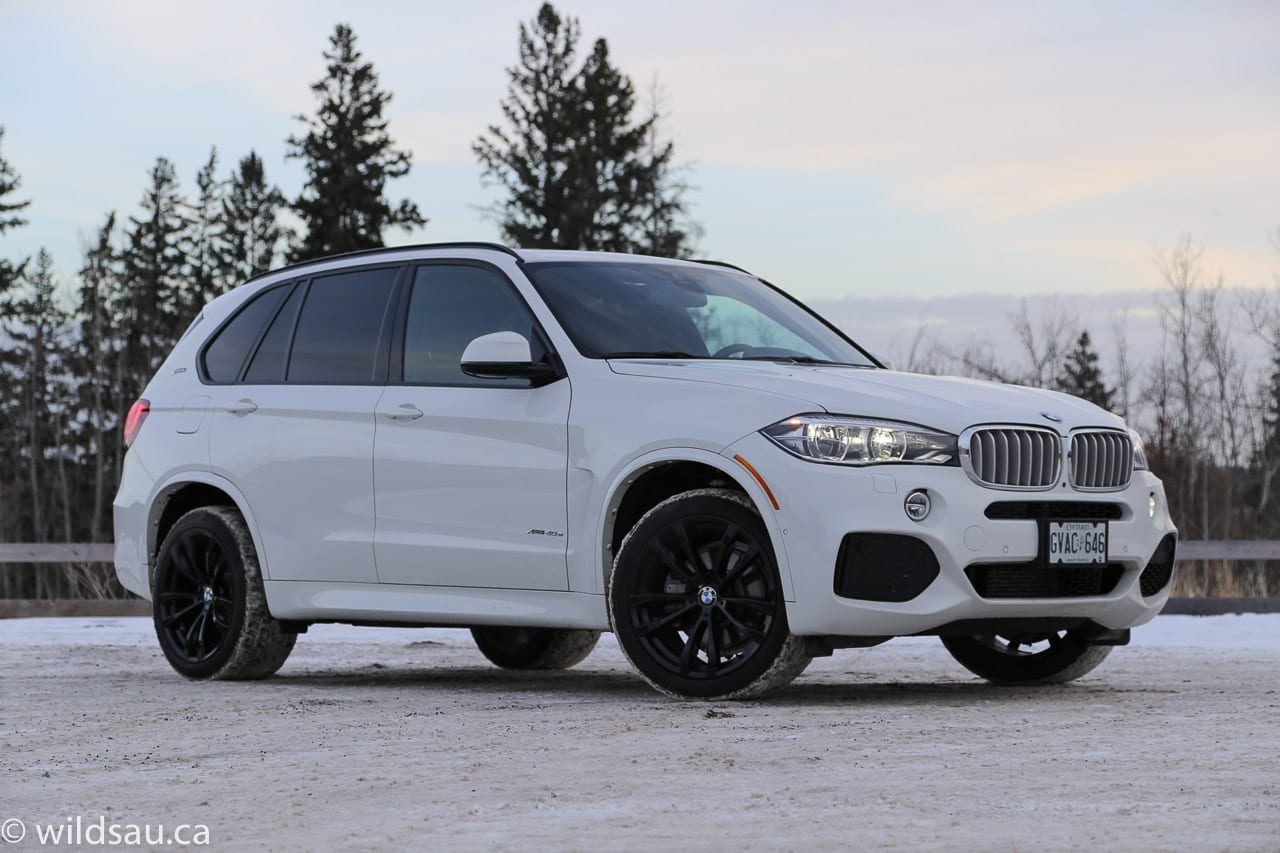
The familiar X5 got a plug-in drivetrain. I was intrigued, and set out to determine whether this trim is worth the additional expense versus the gas-powered ones.
Exterior
Although the design has evolved over the years, the X5 is still instantly recognizable. It looks powerful, sporty (for an SUV) and elegant. It’s handsome in its latest iteration, retaining many of its styling characteristics. You can’t miss that imposing kidney grille, flanked by bright, adaptive LED headlights. LED foglights lurk below.
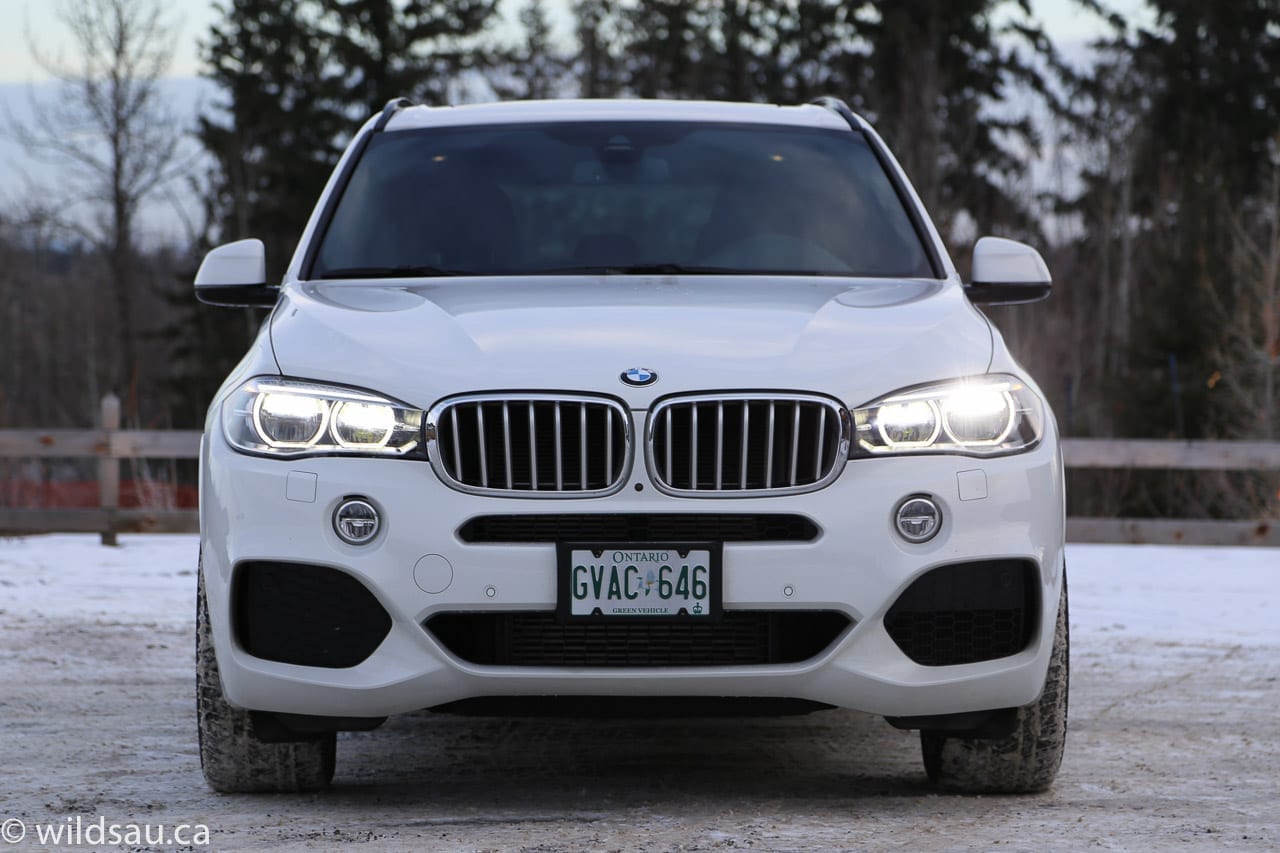
The M Sport Line package adds a bunch of visual tweaks. Most noticeable are the massive lower air intakes in front (one of which appears to be completely fake), a rear diffuser and of course those black 20-inch ///M wheels shod with massive 275/40s in the front and steam-roller-like 305/35s out back. My review vehicle’s deeply tinted windows added a nice touch.
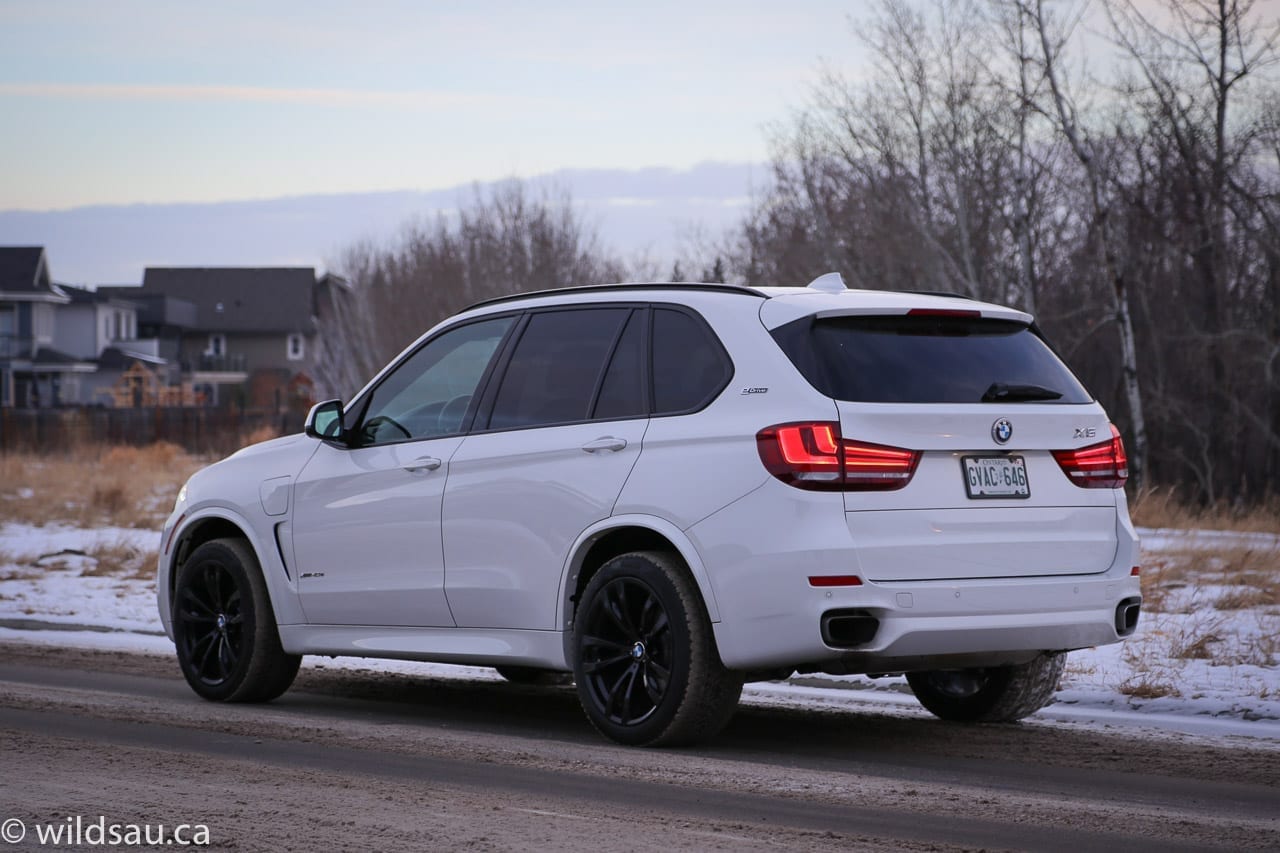
There’s not much of a hint on the exterior in terms of this vehicle’s hybrid power – just a couple of subtle eDrive badges.
Interior/Tech/Convenience
The X5 sports a spacious and refined cabin, beautifully-crafted out of lovely materials – a luxuriously-stitched dash, a Mocha nappa leather interior, oak trim pieces and Alcantara-like material on the pillars and the ceiling. I enjoyed the M Sport steering wheel, as well as the heated and ventilated perforated leather seats – they’re comfortable and nicely bolstered too.

BMW’s iDrive continues to grow on me. Here it controls the wide screen jutting out of the dash, and helps you manage your navigation, phone, tons of vehicle settings and the fantastic Harman/Kardon sound system which feeds off a number of sources including the (optional) Apple CarPlay. There’s a 4-zone climate control system so everybody is happy.
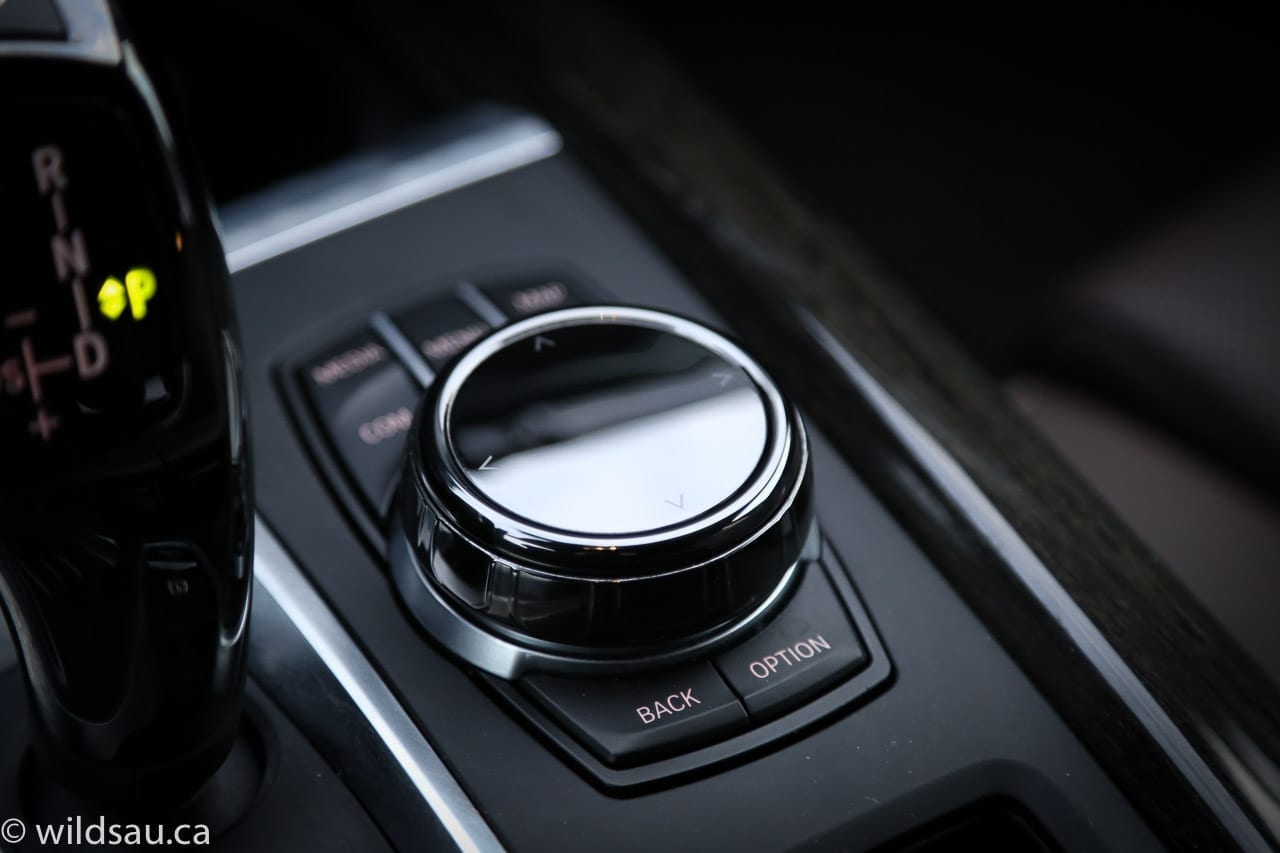
The driver assistance technology is decent but not nearly as extensive as you’ll find in some of the competition – blind-spot detection, surround view cameras and parking sensors all around, park assistant, heads-up display and automatic high beams.

Rear Seats
The back seating area feels nice and airy thanks to the humongous panoramic sunroof overhead. We all found the rear seats comfortable. The two outboard seats are heated and spacious (I’m 5’10” and had a couple of inches to spare in terms of head and leg room) – but they’re not as roomy as you’d think when you look at the size of the X5. The middle position is a bit narrow but could still accommodate an adult passenger.
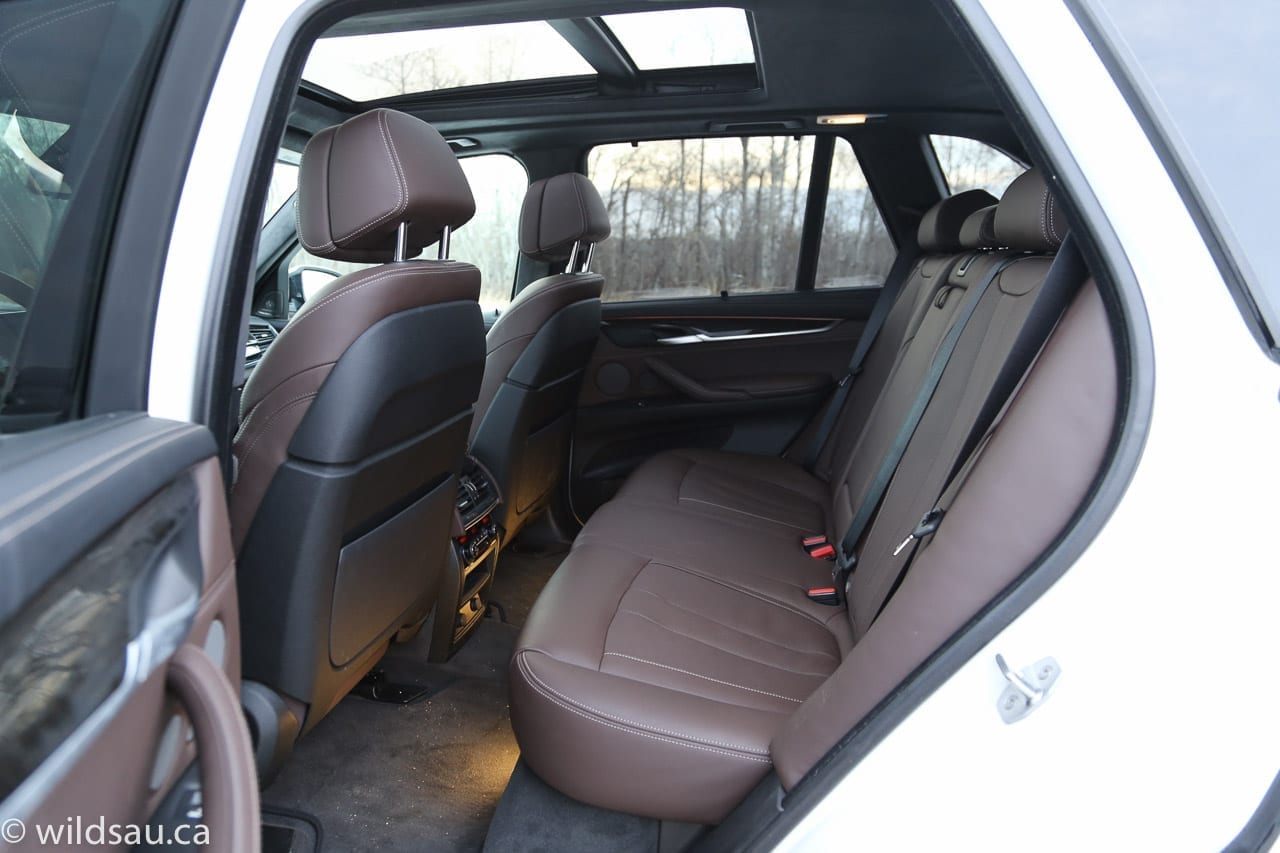
Rear passengers get air vents (bonus: there are the standard vents on the back of the centre console, but also additional vents on the side pillars – awesome!), their own climate control zones, two 12V plugs and manual side window sunshades.
The third row option available on other X5s is not available on the 40e hybrid. Thank goodness, because the third row in this model is basically useless.
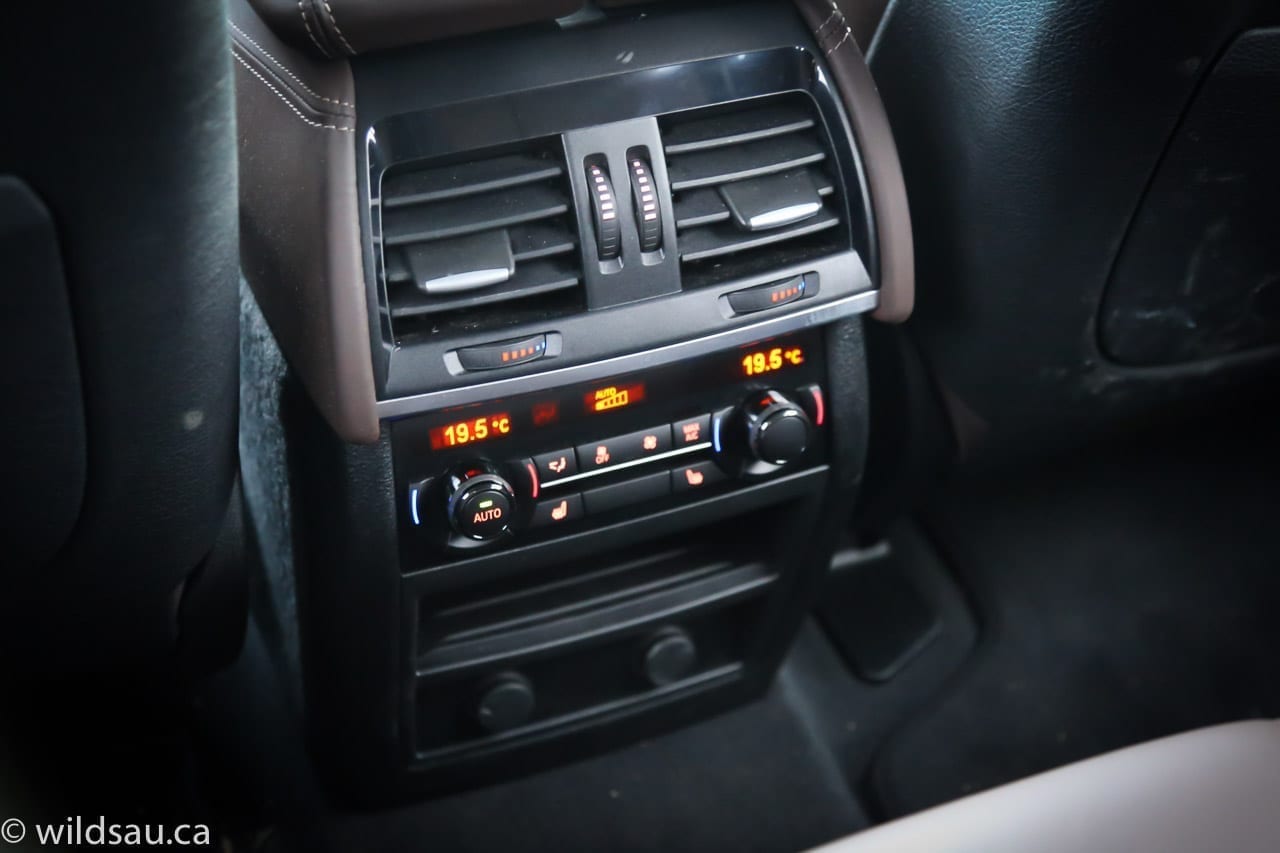
Storage
There is a scrolling lid at the front of the console. As you slide it forward you expose two cupholders and then a genuine ashtray and cigar lighter. A quaint touch for the smokers!
The bin under the clamshell armrest lid has auxiliary and USB plugs and a vertical wireless charging clamp on one side. I had a very thin case on my iPhone X and it was a struggle to get it into the clamp. It felt like it would be damaging or scratching the phone, that’s how tight it is. I chose not to use it as I was uncomfortable with this solution and it’s potential to damage by phone (or at very least damage my leather case – which it did). I wished for the typical charging mat in a bin somewhere – it’s what every other manufacturer does, and it works perfectly fine.
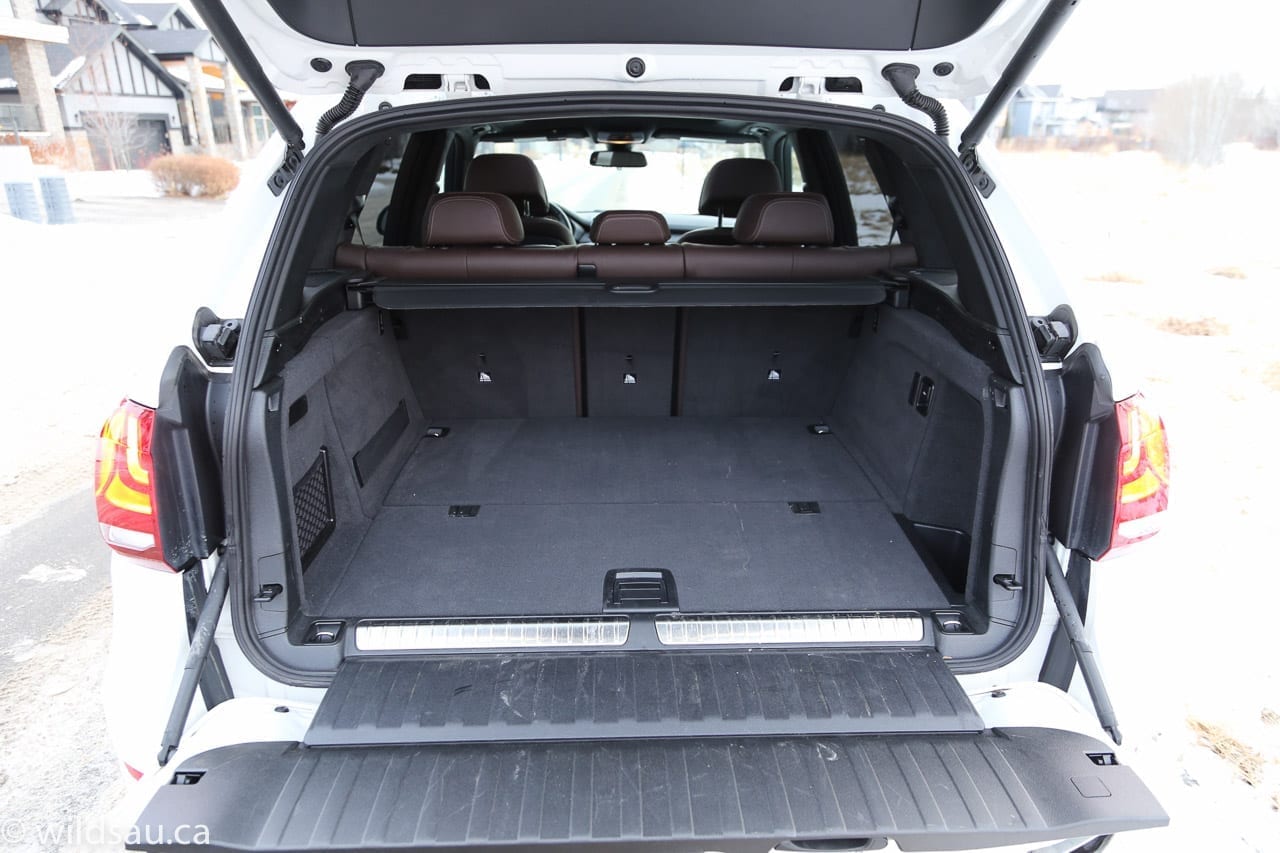
The X5 has a large 500L trunk, accessible via the nifty two-piece power tail gate – of note, the cargo capacity is slightly reduced from the gas-powered X5s. You can also fold the rear seats down in a 40/20/40 split for up to 1,720L of cargo space, should you need it. We were able to move a very large cabinet in the X5, without having to move up the front seats.
Under the Hood
The X5 40e’s powertrain combines turbocharged 2L 4-cylinder and an electric motor for a combined rating of 308 HP. This system also puts out 332 lb.ft of torque at 1,250 RPM. The transmission is an 8-speed automatic and of course there’s the xDrive all-wheel drive system.
BMW rates this X5 at 10.2/9.3 L/100 km (city/highway) which is impressive for a vehicle of this size. We averaged 11.1 L/100 km during a very frigid week, with plenty of slow trudging through fresh snow.
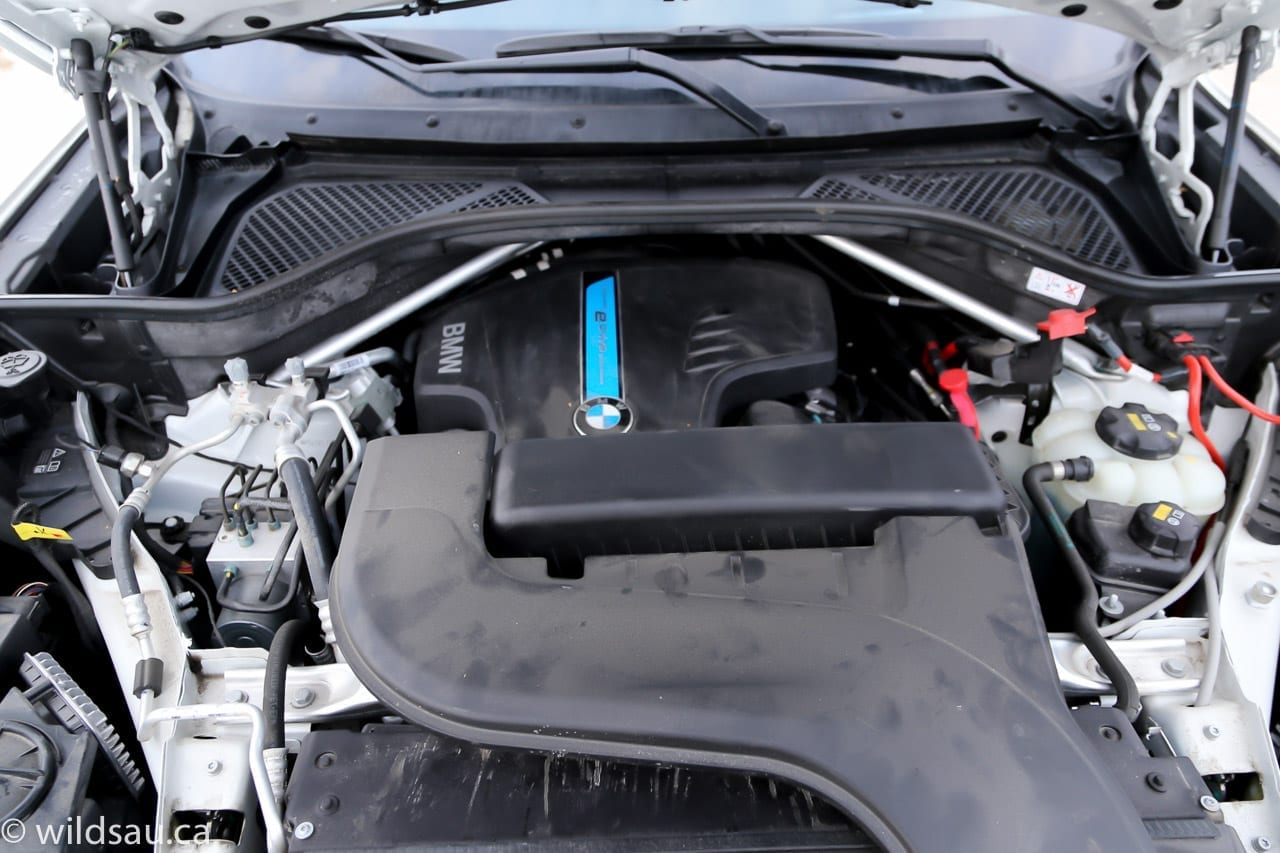
If you’re all about fuel efficiency, consider picking up the diesel X5 – it’s only slightly thirstier in the city but thumps the hybrid on the highway, and overall, it’s 9.3 L/100 km combined rating bests the hybrid’s 9.6.
The Drive
Although this hybrid X5 isn’t slow (it’ll do 0-100 km/h in 6.8 seconds), it doesn’t feel as fast as it is and it doesn’t feel as responsive as the base gas-powered X5 35i. The double-edged sword here is this drivetrain’s smoothness and quietness – it makes things seem very reserved, even under hard acceleration and full throttle when that little 4-cylinder is working very hard. Also, when you want to accelerate quickly – either from standstill or when you’re already on the go, there is always a lag between when you step on it and when the surge of electric power kicks in. It’s barely noticeable during everyday driving, but it’s definitely there.
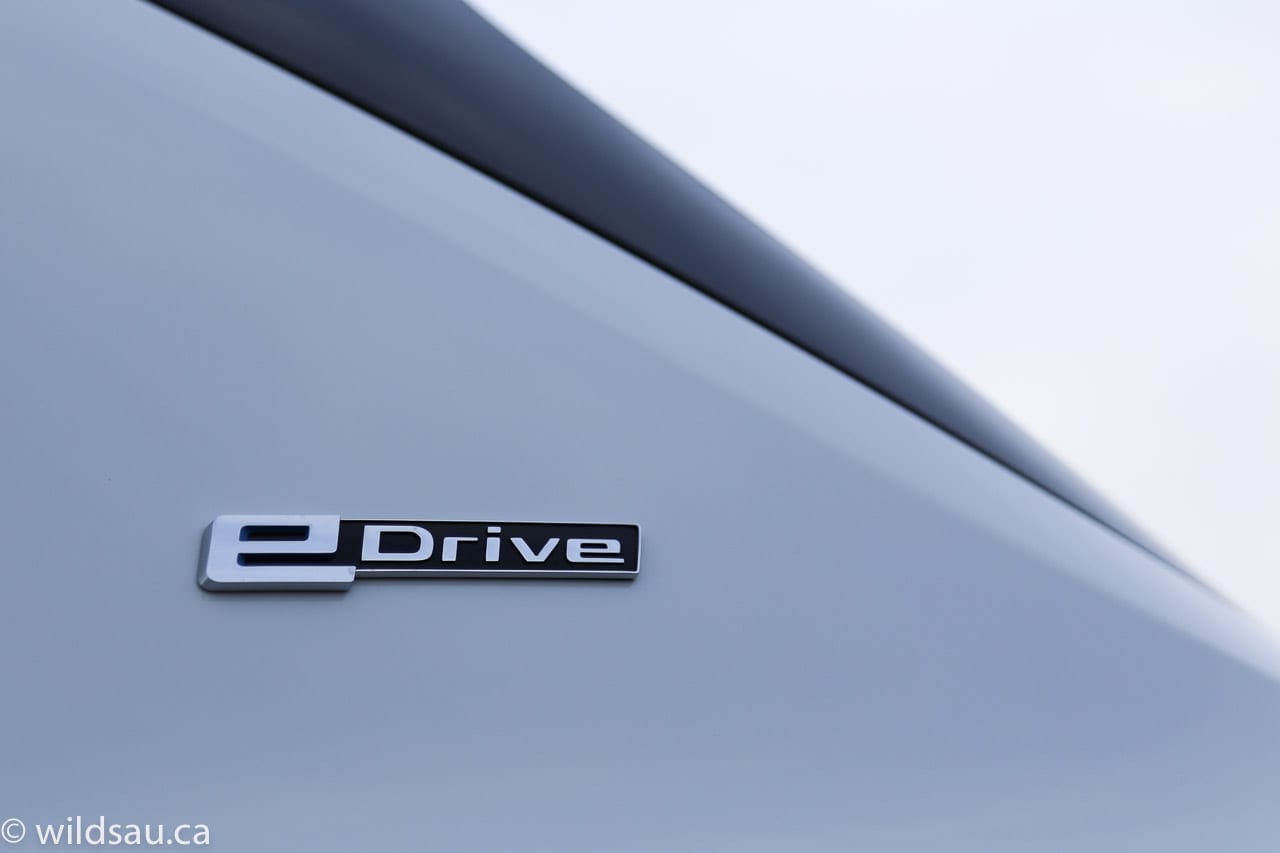
Other than the slight power lag, I found the transitions between EV and hybrid/gas to be nearly imperceptible. On a couple of occasions the auto start/stop fired up the engine while I sitting somewhere parked and it was very rough and actually scared me – otherwise, that function too is smooth and virtually unnoticeable. Charging the battery from drained to full took about 7 hours with a normal household plug – which is fine after work in the evening. The charge port is in front of the driver’s door and a glowing LED ring tells you if it’s still charging or done. The plug-in battery allows for up to 40 km of pure electric travel, before the system turns into a hybrid. Those all-electric drives were kept to a minimum as I tested this during our coldest snap of the winter (so far), which drained the battery much more quickly – the most I got out of it during normal commuting in these -25 to -30 C temperatures was about 17 km. Although the power and speed are reduced in pure electric mode, the X5 feels perfectly composed, providing smooth and ample acceleration power and divine silence under electric power.

As with some other plug-in hybrids, you can decide whether you want to maximize your EV driving (Max eDrive), save your battery charge for driving in electric mode later (Save), or just letting the system decide which mode is best for your driving (Auto). This is done via the eDRIVE button on the console.
When it comes to normal driving, you can also choose between three modes – Eco Pro, Comfort and Sport. These impact the responsiveness of the powertrain and the chassis.
The X5’s adaptive suspension supplies a very comfortable ride while keeping that BMW firmness intact. Handling is interesting. It’s certainly capable of taking care of itself, should you have to sling it into a corner with speed, and it is a competent performer. But its staggering 2,368 kg (5,220 pounds) curb weight is always evident as it plows into those curves. It’s nice during normal driving as the vehicle feels very substantial (because it is) but that weight rears its head during cornering. It’s not just heavy, it’s also tall and there is no denying that all these things work against it. But in some ways, it’s almost as if the X5 celebrates its heft. It doesn’t hide it, but rather makes the best of it. It’s certainly nimble enough for this class, and retains all the comfort one needs.
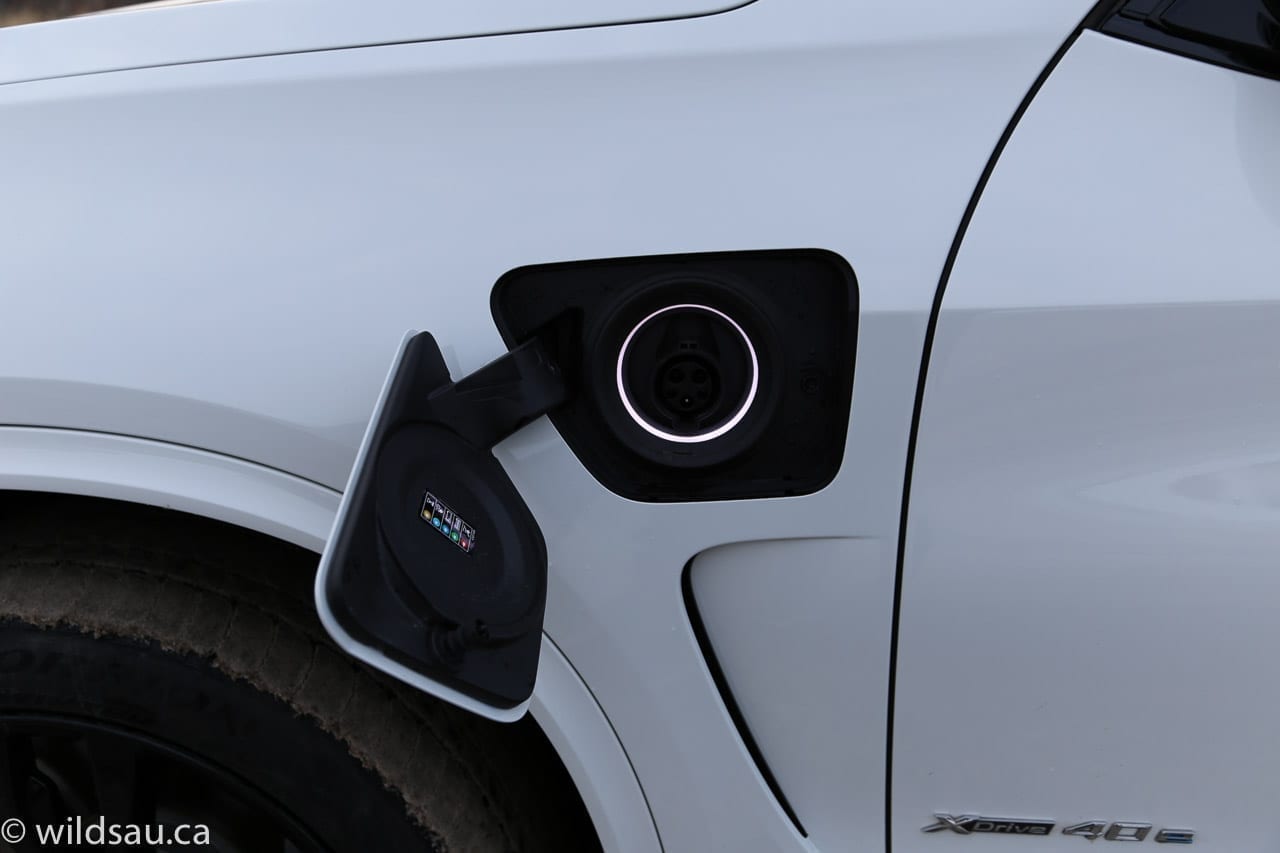
xDrive performed admirably in the snow, handling Edmonton’s winter conditions nicely. It always felt stable and secure. We thoroughly enjoyed the higher seating position – the views of the road are great.
A special note, and big kudos to BMW on this point – the regenerative brakes are absolutely outstanding. This technology is typically a big downer in other hybrids because it makes the brakes super-grabby, but the X5’s brakes felt pretty much like conventional brakes and I loved them.
Nitpicks
So, let’s see here. We’re looking at just under $83,000 before freight and PDI and taxes. That means this thing is sneaking up to $90K. And there’s no adaptive cruise control. That’s a feature that comes standard in virtually all Toyota and Honda models now. As in it’s not even optional – they just put it in there. But this X5 didn’t have it. And that drove me nuts.
We found that when the X5 was running on electric power, it didn’t heat the vehicle nearly as well – which became a noticeable issue in -25 to -30 C temperatures. You could tell the interior temperature was dropping under these conditions. I experienced a similar issue with an Infiniti hybrid previously.
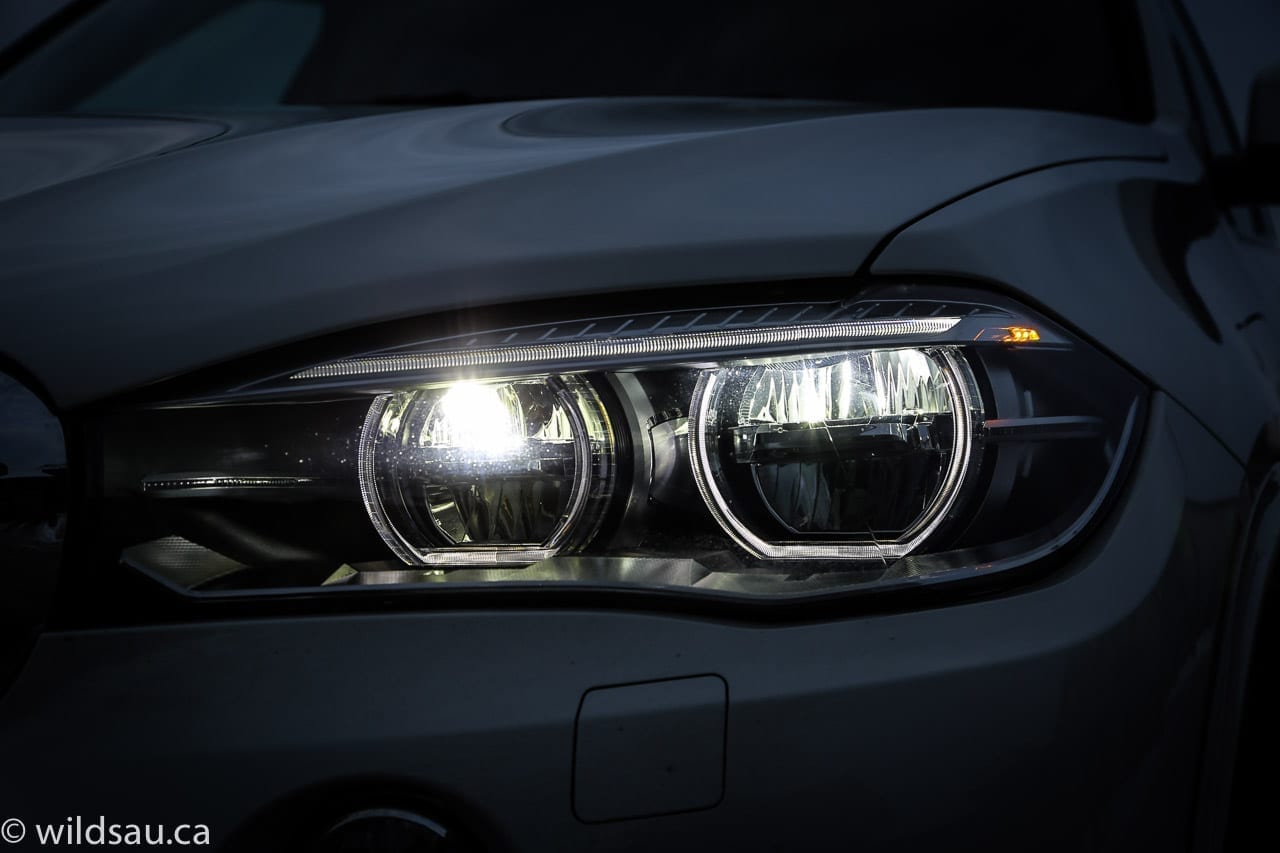
The Verdict
There is much to like about the X5 40e. It’s a big, spacious, luxurious prestigious SUV. It’s fast enough, it’s comfortable and came back with surprisingly good fuel economy. Yet, at $6,200 more than the base gas-powered X5, I’m not sure how much sense it makes. It would take quite a while to recover those costs through fuel savings in my world, and the vehicle is slower and heavier than the X5 35i.
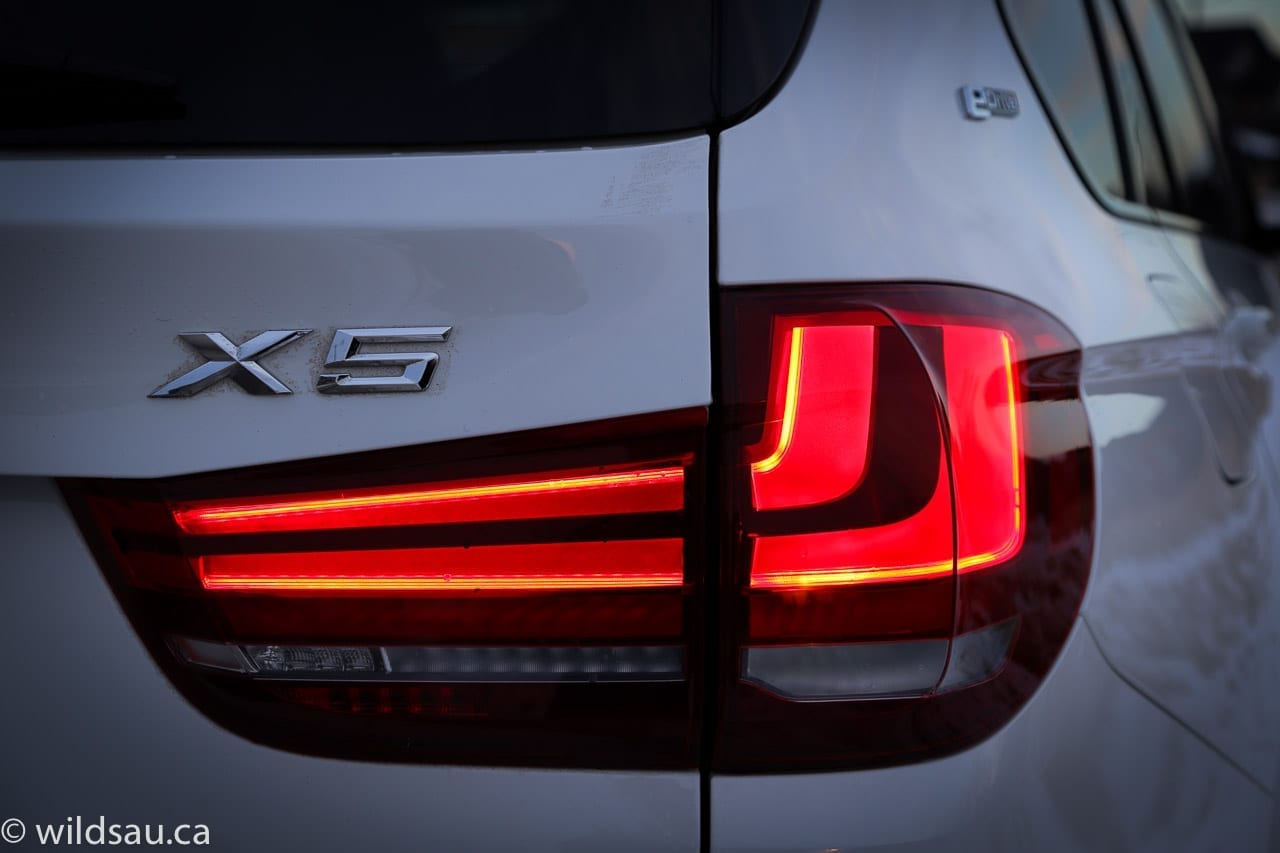
WAF (Wife Approval Factor) was high. She loved the seating position and the luxurious trimmings inside, and didn’t care about the reduced performance – nor the improved fuel economy.
There is a business case for the 40e plug-in hybrid trim, of course. If you have a shorter commute, and have the ability to charge your vehicle at work during the day, you could ostensibly travel on electric power most of the time, particularly in warmer climates. But if I were looking to put an X5 on my shopping list, I’d appreciate the X5 40e’s technological bits and economy in passing and then opt for the cheaper, quicker X5 35i. The diesel X5 isn’t available among the current 2018 models that BMW offers, but you can always grab a previous model year if you want to go down the diesel road.
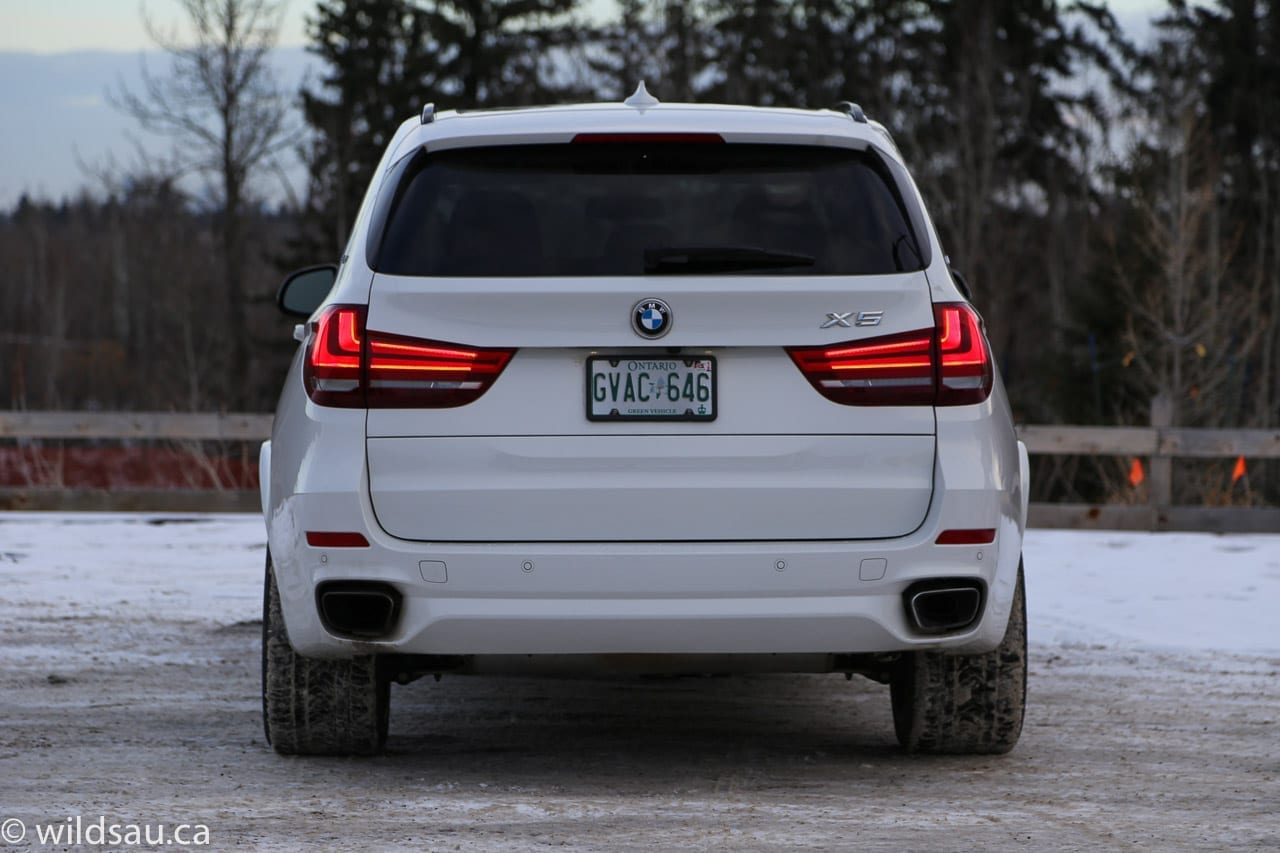
Disclosure: Vehicle was provided by BMW Canada.
If you enjoyed this review, feel free to check out my other vehicle reviews under the car reviews tab at the top of my blog.
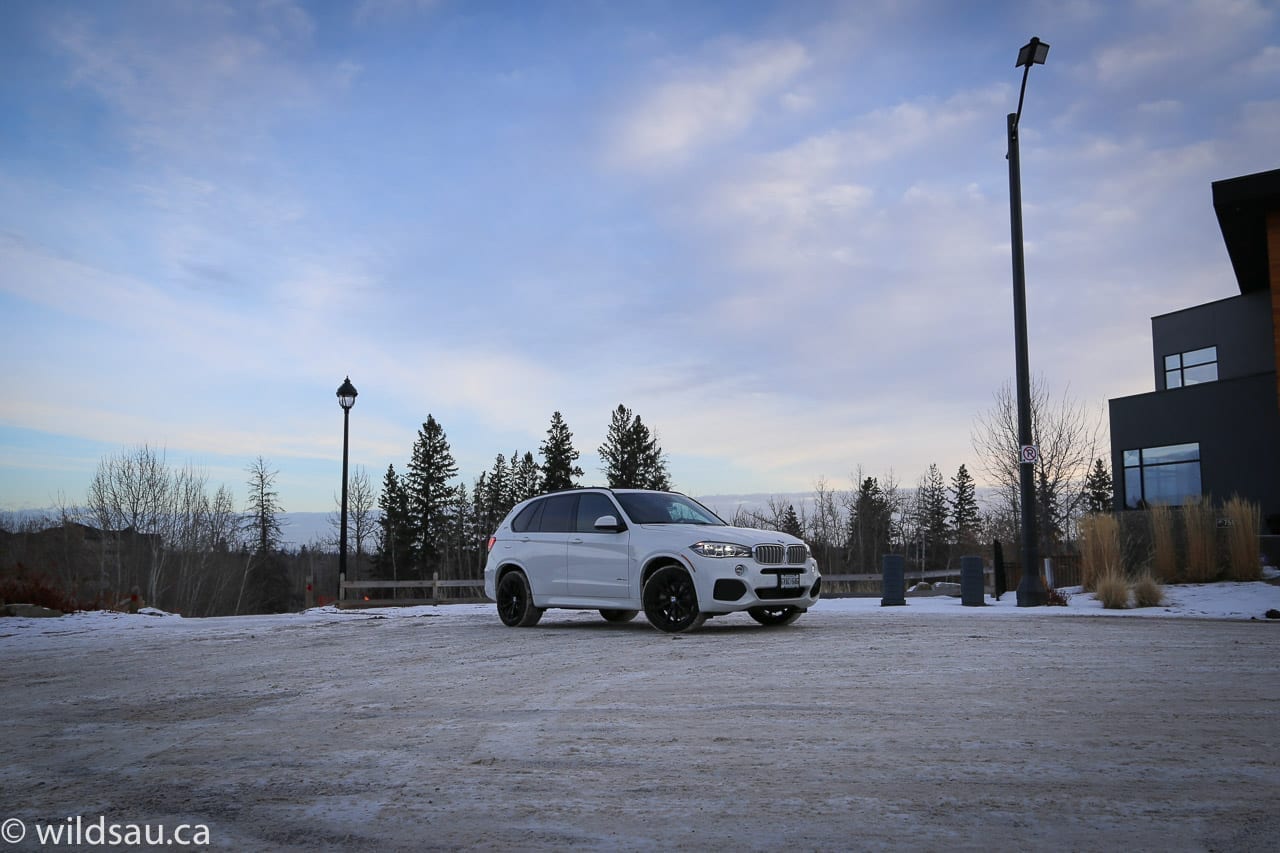
Pricing: 2017 BMW X5
Base price (X5 40e trim): $74,950
Options: $6,300 Premium package; $4,000 M Sport Line; $750 Smartphone Connectivity Package; $2,500 LED Lighting Package
Price as tested: $88,500
